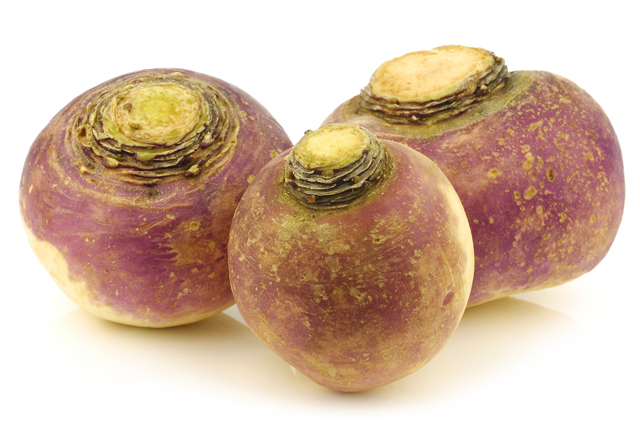
It is a biennial plant that stores well and thrives in cooler climates where summer season is not extremely hot. After being harvested, rutabaga can be stored in a damp and cool root cellar or similar environment, where it can last up to six months in storage. Moreover, the green top of the plant is removed and the bulb is waxed in order to avoid loss of moisture during storage or transit.
One of the primary reasons why you should include rutabaga in your diet is because of its high fiber content. Being rich in fiber, rutabaga can promote digestive health. It can enhance bowel movements and reduce the risk of developing digestive disorders, including acid reflux, ulcers, constipation, hemorrhoids, and diverticulitis. The insoluble fiber content of rutabaga can also reduce the risk of cardiovascular disease, hypertension, diabetes, stroke, and obesity. (Related: Ruta-what? The Root Vegetable You Should Be Eating.)
Rutabaga is also a very good source of potassium, which is an essential mineral for the body. It acts as an electrolyte that conducts electricity through the body to ensure that cells, tissues, and organs function properly. Having adequate levels of potassium in the body is also important for bone health, particularly in the elderly, and in cardiovascular health. The mineral is also needed for the contraction of smooth muscles and for the proper functioning of the heart.
The root crop is also an excellent source of vitamin C or ascorbic acid. In fact, one cup of raw rutabaga cubes contains 35 milligrams (mg) of vitamin C. Foods rich in vitamin C support digestive health. In addition, high consumption of vitamin C has been linked to a lowered risk of colorectal cancer. Rutabaga also contain other bioactive components, such as glucosinolates and phenols. Glucosinolates are precursos to isothiocyanates, which may lower the risk of certain cancers. On the other hand, phenols function as antioxidants that fight against free radicals in the body.
Rutabaga and its history
Rutabaga is a relatively new domesticated crop, as it was first mentioned in botanical literature in the 17th century. Its cultivation started in Bohemia, the western Czech Republic, then in Scandinavia, where it was considered not only as food for humans, but for livestock as well. Consumption of rutabaga reached France and England in the 18th century. In the early 19th century, it was introduced in North America where it was mainly grown as livestock madder. Today, it is not really widely consumed in the U.S. compared to other more common root vegetables because it is difficult to grow in bad weather conditions, leading to scarcity and affecting its popularity as a food product.
Despite this, rutabaga made an impact in different cultures. In Irish culture, rutabaga is believed to be the first jack o' lantern used for Halloween. Moreover, a lot of towns with a prominent Scandinavian population even have had events to celebrate the rutabaga and its place in cultural traditions, such as the International Rutabaga Curl competition that has been a tradition in Ithaca, New York since 1996, and the annual Rutabaga Festival Parade in the town of Cumberland, Wisconsin.
See more news headlines about healthy food at Food.news.
Sources include:
Please contact us for more information.























